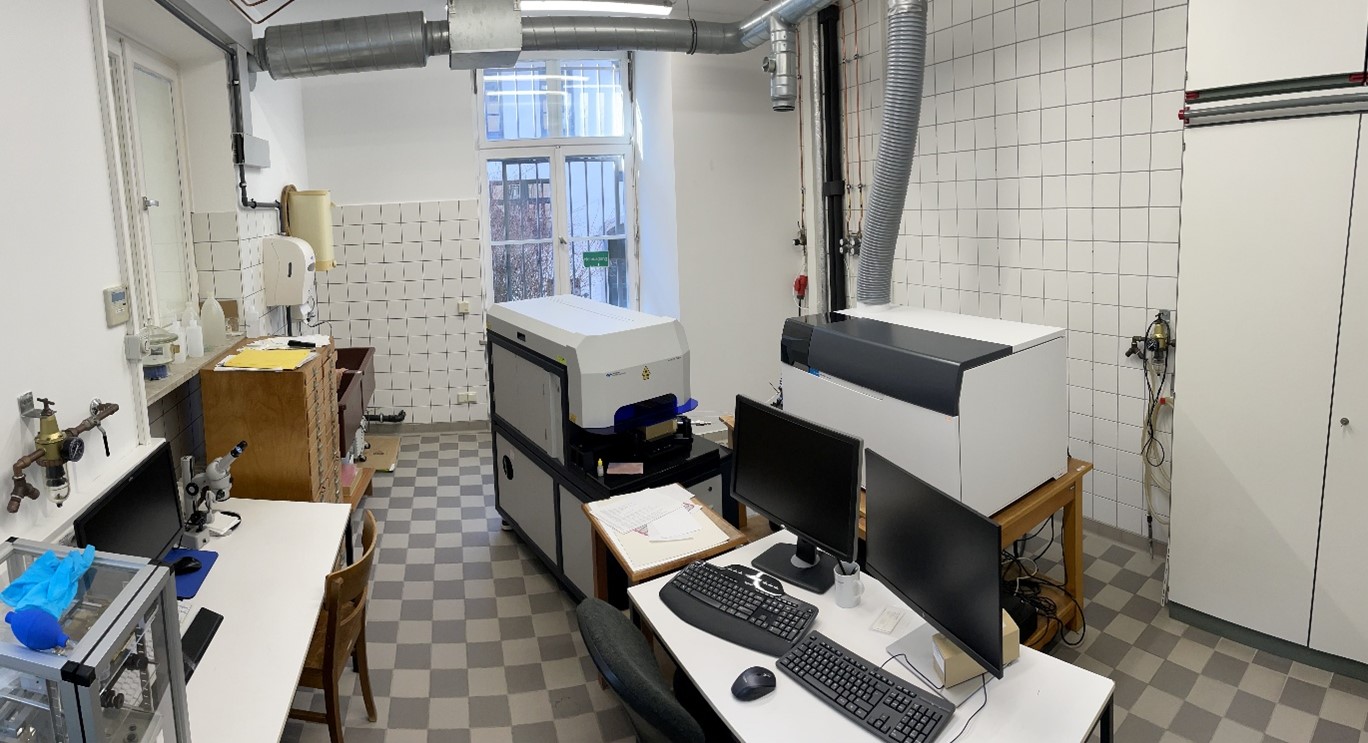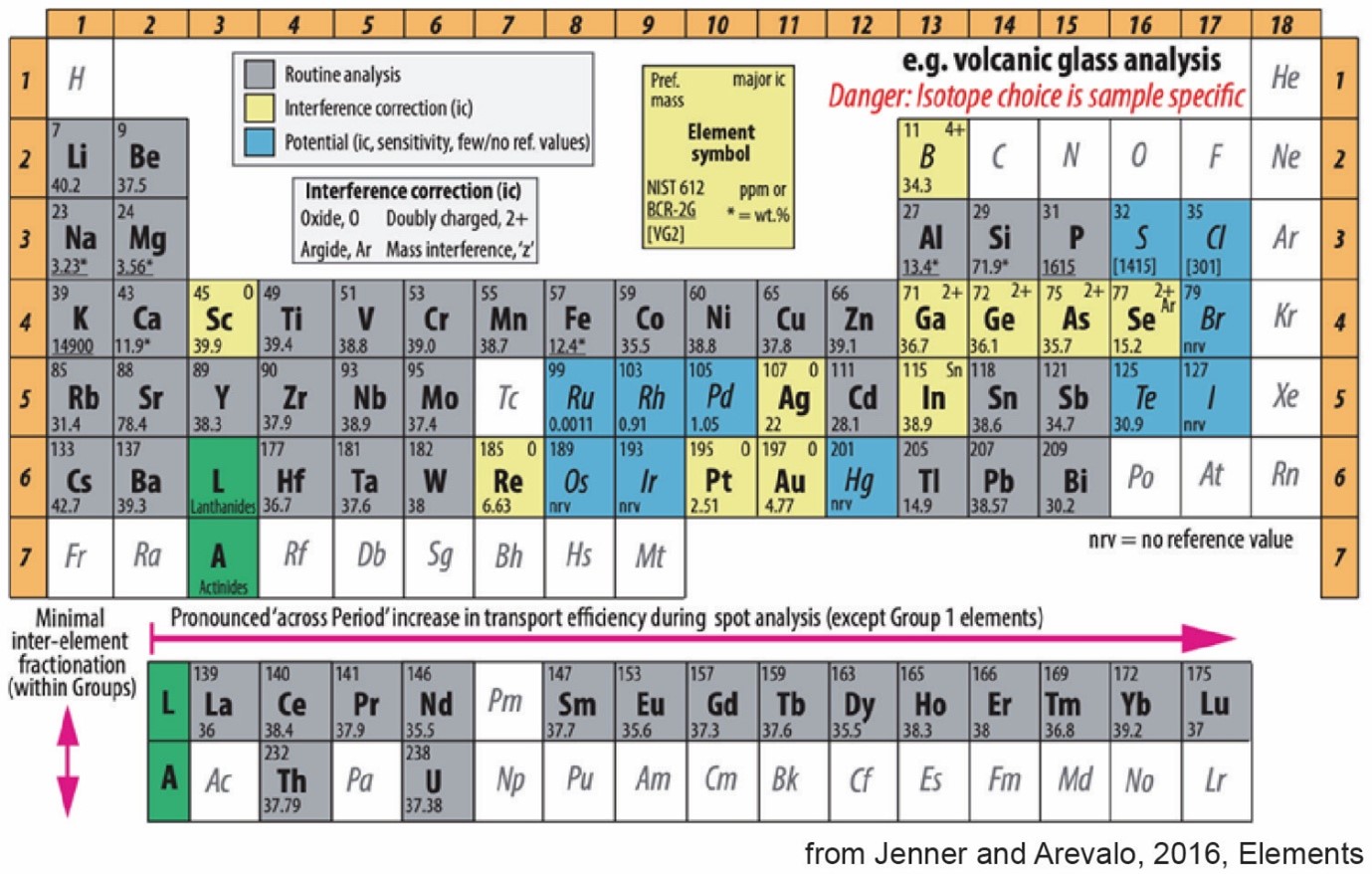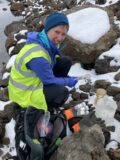Ausstattung
GZN Labor für Laser Ablation Tandem Quadrupole ICP-MS (LA-ICP-MS/MS)
~ Mente et Ardore ~
Unser Labor ist mit einer 193-nm-Excimer-Laserablationseinheit (Teledyne Analyte Excite) ausgestattet, die mit einem neuen und hochmodernen 8900 Agilent Triple-Quadrupole-ICP-MS (LA-ICP-MS/MS) gekoppelt ist. Das Instrument wird für eine breite Palette von Anwendungen eingesetzt, darunter die Spuren- und Isotopenanalyse, Geochronologie und Elementbildgebung in den Bereichen Geowissenschaften, Materialwissenschaften, Metallomik, Biomedizin, Archäologie und Biologie.

Analyse von Spurenelementen und Isotopen
Die Laserablation ICP-MS/MS ist eine einfache, flexible und leistungsstarke Technik: Die Analysen sind schnell (<1 Minute), haben niedrige Nachweisgrenzen (< ppm), verfügen über Laserspotgrößen, die von nur 1 Mikrometer bis zu 110 Mikrometer reichen, und liefern Ergebnisse mit Unsicherheiten, die in der Regel weniger als 5 % betragen.
Aufgrund der hohen Datenaufnahmerate und der hohen räumlichen Auflösung kann LA-ICP-MS/MS auch zur Erstellung von Bildern der Elementverteilung auf Probenoberflächen verwendet werden. Beispiele für solche Kartierungsprojekte sind die Elementzonierung in Mineralen, die Bestimmung der Position von Metallen in biologischem Gewebe oder die chemische Wachstumszonierung von Korallen.
Einfach ausgedrückt verwendet die Laserablation-Methode einen ultravioletten Laser, um die Oberfläche der Probe zu „abtragen“ oder zu „bohren“. Die bei der Ablation entstehenden Partikel werden durch einen Heliumgasstrom zum ICP-MS/MS transportiert, wo die Probenpartikel atomisiert, die Atome ionisiert und die Ionen dann durch das Instrument geleitet und vom Detektor gemessen werden. Da die meisten Feststoffe von einem ultravioletten Laser „gebohrt“ werden können, kann eine breite Palette von Probentypen analysiert werden: Mineralien, Keramiken, Gewebeproben, Muscheln, Knochen, Kunststoffe, Kohlenwasserstoffe und mehr.
In der obigen Abbildung sind die Elemente in Grau diejenigen, die routinemäßig in vielen geologisch relevanten Materialien am GZN Labor für LA-ICP-MS/MS untersucht werden. Außerdem sind wir auf die Messung von Platingruppenelementen, Schwefel und Tellur in Sulfiden spezialisiert (in Abbildung 1 blau eingezeichnet). Andere Analysemethoden zur Messung von weiteren Elementen der blauen und gelben Gruppen sind möglicherweise vorhanden oder können in Zusammenarbeit entwickelt werden.
Weitere Informationen zur Probenvorbereitung und Dokumentation können Sie dem hier zum Download bereitgestellten PDF entnehmen.
Informationen zu Ihrem Besuch, unseren Tarifen und unserer Besucheradresse
Unser Labor ist von Montag bis Freitag von 8:00 bis 17:00 Uhr geöffnet, an Feiertagen jedoch geschlossen.
Für die Terminplanung kontaktieren Sie bitte Prof. Dr. Barbara Kleine-Marshall (barbara.kleine-marshall@fau.de).
Für Fragen zu Analysemethoden, Probenvorbereitung und Ihrem Besuch wenden Sie sich bitte an unseren Laborleiter Dr. Edward Marshall (edward.w.marshall@fau.de).
Besucheradresse
Friedrich-Alexander-Universität
GeoZentrum Nordbayern
Schlossgarten 5
91054 Erlangen
Raum: 0.009
Kontakt
Prof. Dr. Barbara Kleine-Marshall
GeoZentrum Nordbayern
Professur für Geochemie und Lagerstättenkunde
- Telefon: +49 9131 85-22699
- E-Mail: barbara.kleine-marshall@fau.de


